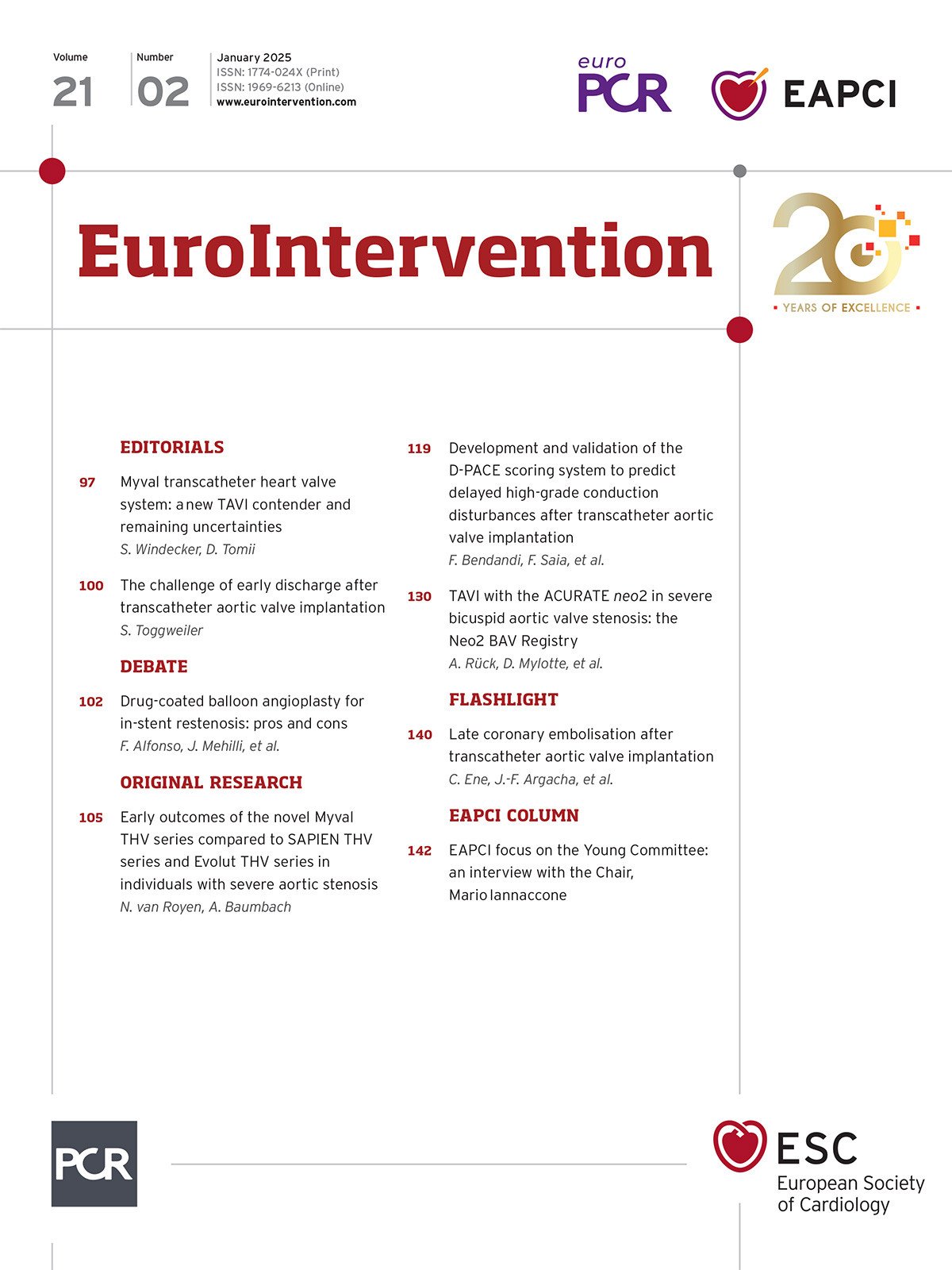Abstract
Background: New conduction disturbances are frequent after transcatheter aortic valve implantation (TAVI). Refining our ability to predict high-grade atrioventricular block (AVB) occurring later than 24 hours after the procedure would be useful in order to select patients eligible for early discharge.
Aims: This study was designed to identify predictors of high-grade AVB occurring between 24 hours and 30 days after TAVI and to develop and validate a predictive risk score.
Methods: We analysed clinical, procedural, and electrocardiographic parameters of 1,290 TAVI patients. Independent predictors of delayed high-grade AVB were used to develop the predictive score, which was then externally validated in a cohort of 936 patients.
Results: Implantation of self-expanding valves, greater implantation depth, longer PR interval in preprocedural electrocardiogram (ECG) and greater increase of PR duration in next-day ECG, preprocedural right bundle branch block (RBBB) and new-onset left bundle branch block or RBBB that persisted in next-day ECG were independent predictors of delayed high-grade AVB and were combined to develop the Delayed atrioventricular block Prediction for eArly disChargE (D-PACE) score. The areas under the curve of the score were 0.879 (95% confidence interval [CI]: 0.835-0.923) and 0.799 (95% CI: 0.730-0.868) in the derivation and validation cohorts, respectively. Based on the score, patients can be classified into three risk categories; low-risk patients demonstrated an incidence of delayed AVB of less than 1% and are ideal candidates for next-day discharge.
Conclusions: The D-PACE score can be used to stratify TAVI patients according to their risk of delayed high-grade AVB and thereby identify those suitable for next-day discharge.
Sign up for free!
Join us for free and access thousands of articles from EuroIntervention, as well as presentations, videos, cases from PCRonline.com

